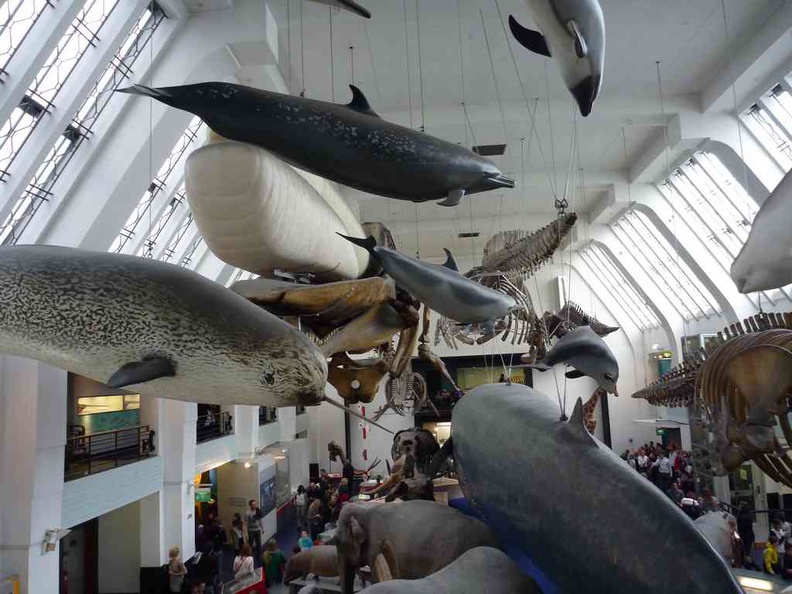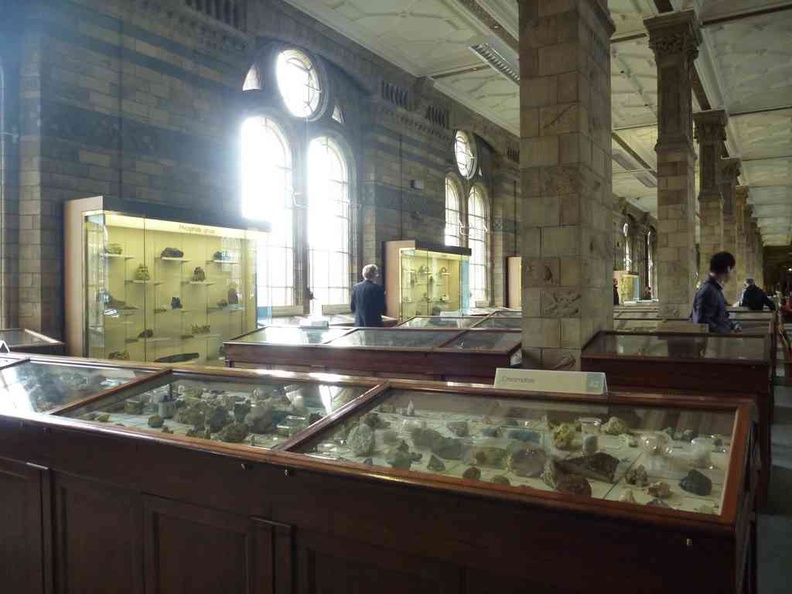The London Natural History museum is one of my few favourite museums in the South Kensington district I always enjoy visiting. It is a spectacle in its own right from the myriad of exhibits, history and vastness of the establishment, such as dinosaurs, fossils, taxidermy, and Skeletons.
The British is a pioneer of Natural history, having mapped most parts of the world during their colonisation. Let’s explore this vault of knowledge through its multiple galleries.
Furthermore, the Museum opened to visitors on 18 April 1881. The galleries are segmented between three main zones on the ground floor- a blue, red and green zone. The Blue zone is what I like to call the “big objects gallery”. Also, it is situated the immediate left of the main lobby and far end housing dinosaurs and a Mammals (blue whale model) gallery, which I shall touch on later.

We have Dinosaurs!
Moreover, Dippy the Diplodocus skeleton greets you at the entrance front courtyard of the museum. Here, the left galleries leads into the (Blue) dinosaur galleries, while the mammal and fossil Red galleries to your right.

Also, a row of grand staircases head up front leading upwards to the upper second floors. Midway on this grand staircase, a marble statue of Charles Darwin, the British scientist who revolutionised the concept of evolution sits.

Furthermore, the dinosaur section starts off with an overhead platform walk over various ground floor exhibits. It allows you to view a number of suspended fossil Skeletons and skulls or dinosaur mounted up here along the wall. Examples include Triceratops skull and the first skeleton of an Iguanodon.

Additionally, moving on, the mid-point of dinosaur section involves an animatronic roaring life-sized T-rex, complete with light and sound effects. Also, it is great for kids, but otherwise tad gimmicky. The dinosaur section continues down to ground level through the edutainment section of the galleries.
(Large) Mammal gallery hall

Moreover, the blue mammal gallery is one of the larger galleries. Here, you can observe how you measure up against the largest Mammals in the animal kingdom. Also, examples includes mammoths, tall giraffes, giant elk, horses, hippos and a blue whale suspended from a skylight-lit ceiling.

Additionally, moving on is the Green zone, comprising of glass cases with exhibits filled with fossils of marine reptiles, bugs, creepy crawlies. Notable finds here includes a near complete Stegosaurus stenops fossil, as well as a Dodo, and a Mammoth skeleton from the ice age.

Notably, the museum exhibits are managed by the British wildlife variety of plants and animals for both research and educational use.

Minerals gallery, space and Meteorites

In addition, the red zone comprises of human evolution as well as the Earth hall. This spot is also where you can find traveling temporary exhibitions like the Animals Inside Out exhibition which was running during my visit.

Additionally, moving on, up on the second floor is the earth treasury Minerals and the vault. It is a collection of rare earth stones and minerals, such as diamonds. Also, you can find a cross section of a giant Sequoia tree. Sequoia are among the oldest living organisms on Earth.

Furthermore, moving on from these hidden treasures and the boring minerals section is the Earth hall’s Space and rocks gallery. It is a relatively new addition on the modern rear wing called the “Darwin center”. The earth hall is an interesting one. Also, it teaches about the restless volcanic surface of our planet with volcanoes and earthquakes.
A museum cathedral architecture to nature
Designed by Alfred Waterhouse, the museum spots a rather cathedral look. Entering the museum from the main Cromwell Road entrance is the best way to appreciate the building exterior architecture. However, it can get pretty busy here, and you can also consider alternative side entrances with little to no queues to enter.

Also, lined on the building exterior façade are several Terracotta figures, such as gargoyles, lions, and wolves to name a few. Terracotta is more hygienic and grime resistant in heavily polluted Victorian London during the 1850s. Also, terracotta was a cheaper, faster and less labour intensive alternative to Stone.
Additionally, the museum interior offers one of Britain’s most striking and unusual examples of Romanesque architecture. Here, going with the natural history theme, various interior walls, pillars and crevices are decorated with animal figures and floral patterns. Also, this distinction flows into the separate geology and palaeontology departments from the zoology and botany departments we see today.
Notably, this includes even the museum wall tiles and supporting columns, inspired by the patterns found on fossilised tree trunks. Moreover, if you look up in the main lobby, you would notice the gallery ceilings were also adorned with decorative botany life
All in all, London Natural History museum is one of history and learning. Whether it is extinct Dinosaurs, Human evolution, land, oceans, whales space you name it. It is a mix of old and new blended into one package sure to keep you filled for an entire afternoon, or even an entire day. The museum is always open daily Monday-Sunday from 10am- 6pm, with only closing days 3 days over Christmas. Definitely a must-see in London.













[…] start, especially around the South Kensington area with the V&A museum, Science museum and the Natural History museum with […]